
The Parthenon: Athens' Enduring Symbol
Explore the Parthenon, an enduring symbol of ancient Greece and Athenian democracy, standing proudly atop the Acropolis of Athens.
The Parthenon, a majestic marble temple dedicated to the Greek goddess Athena, stands atop the Acropolis in Athens. Constructed between 447 and 432 B.C., it remains a powerful symbol of ancient Greece and Athenian culture, despite enduring centuries of war, explosions, and looting.
A brief summary to Parthenon
- Athens, GR
- +302103214172
- Visit website
Local tips
- Purchase tickets online in advance to avoid long queues, especially during peak season.
- Visit early in the morning or late in the afternoon to avoid crowds and the heat.
- Wear comfortable shoes as the Acropolis involves a fair amount of walking on uneven terrain.
- Bring water and sun protection, as there is limited shade on the Acropolis.
- Consider visiting the Acropolis Museum to see artifacts from the Acropolis and learn more about its history.
Getting There
-
Metro
The easiest way to reach the Parthenon is by taking the Athens Metro. Take Line 2 (Red Line) to the 'Acropoli' station. From the Acropoli station, the southeast entrance to the Acropolis is just a 2-3 minute walk. Single metro tickets cost €1.20 and are valid for 90 minutes.
-
Bus
Several bus lines service the Acropolis area. Bus routes 230, 035, 040, 550, and A2 stop at Makrygianni Station, which is a 5-minute walk to the Acropolis. From Syntagma Square, bus number 230 will take you to the Akropole bus stop near the main entrance of the Acropolis. Single bus tickets cost €1.20.
-
Walking
From Syntagma Square, it is approximately a 20-minute walk to the Acropolis. Head south towards the Plaka district and follow the signs. The walk is mostly uphill and provides scenic views of the city. Be aware that the sidewalks can be uneven.
Discover more about Parthenon
Iconic landmarks you can’t miss
Temple of Themis
0.1 km
Discover the Temple of Themis in Athens, a historical monument dedicated to the Greek goddess of justice and divine order.

Greek Flag of Athens Acropolis
0.1 km
Witness the iconic Greek Flag atop the Acropolis, a symbol of Athenian history, pride, and breathtaking panoramic views of ancient and modern Athens.

Las escaleras de Mnisikleous
0.2 km
Discover the vibrant charm of Las Escaleras de Mnisikleous, a picturesque Athenian stairway with colorful murals, cafes, and stunning city views.

Plate with Apostle Paul's Sermon
0.3 km
Explore the Plate with Apostle Paul's Sermon in Athens, a captivating sculpture honoring a pivotal moment in Christian history amidst rich cultural heritage.

Horologion of Andronikos Cyrrhestes
0.3 km
Explore the Tower of the Winds, an ancient marvel in Athens: a testament to Greek innovation in timekeeping and meteorology.

Roman Forum of Athens (Roman Agora)
0.3 km
Step back in time at the Roman Forum of Athens, where ancient history comes to life amidst remarkable ruins and architectural wonders.

Areopagus Hill
0.3 km
Discover Areopagus Hill, a historical landmark in Athens where ancient philosophy meets breathtaking views of the Acropolis and the vibrant cityscape.
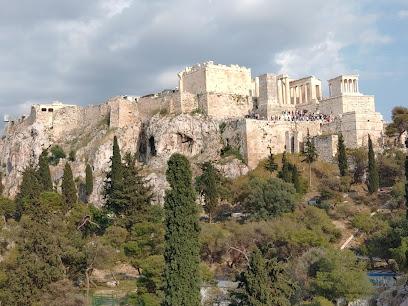
Old Madrasa Gate
0.3 km
Explore the Old Madrasa Gate in Athens, a historical landmark reflecting the city's Ottoman heritage and diverse cultural layers.

Museum of Greek Folk Musical Instruments "Fivos Anoyanakis" - Centre for Ethnomusicology
0.3 km
Explore the rich musical history of Greece at the Museum of Greek Folk Musical Instruments, a unique cultural experience in the heart of Athens.

Roman Stoa
0.4 km
Explore the Roman Stoa in Athens: Where ancient commerce meets serene beauty in a historical landmark.
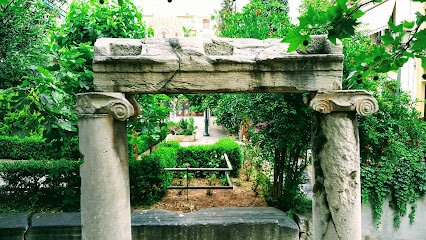
Gate of Athena Archegetis
0.4 km
Explore the Gate of Athena Archegetis, a symbol of Roman patronage and Athenian heritage, at the heart of Athens' ancient marketplace.

Holy Church of the All-Great Taxiarchs and the Virgin Mary Gregorousa
0.4 km
Discover a serene sanctuary in Athens: Explore the Holy Church of the All-Great Taxiarchs and the Virgin Mary Gregorousa's rich history and artistry.

Late Roman tower wall foundations
0.4 km
Discover Athens' ancient Roman defenses: Explore the Late Roman tower wall foundations, a window into the city's strategic past.

Benizelos Mansion
0.4 km
Explore Athens' oldest house, the Benizelos Mansion, a unique museum showcasing Ottoman-era architecture and the life of Saint Philothei.

Acropolis Museum
0.4 km
Explore ancient Greek history at the Acropolis Museum, home to artifacts from the Acropolis site with stunning views of the Parthenon.
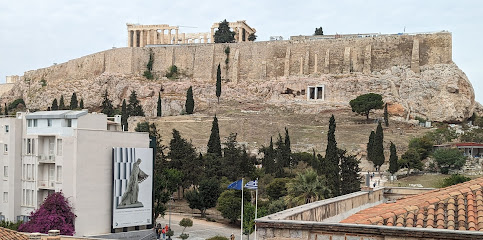
Unmissable attractions to see
Ancient Temple of Athena
0.1 km
Discover the ancient beauty of the Temple of Athena in Athens, a historical landmark that showcases the rich heritage of Greece and stunning architectural prowess.

Temple of Rome & Augustus
0.1 km
Explore the Temple of Rome & Augustus in Athens, a stunning historical landmark that embodies the rich cultural heritage and architectural brilliance of ancient Greece.

The Porch of the Caryatids
0.1 km
Explore the architectural wonder of The Porch of the Caryatids, an iconic symbol of ancient Greek artistry and a must-see on your Athens journey.

Sanctuary of Zeus Polieus
0.1 km
Explore the Sanctuary of Zeus Polieus in Athens, a historical landmark that embodies the ancient glory of Greek civilization with breathtaking ruins and rich cultural significance.

Erechtheion
0.1 km
Discover the historical splendor of the Erechtheion, a unique temple on Athens' Acropolis, featuring stunning Caryatids and rich ancient mythology.

Temple of Asklepios
0.1 km
Explore the Temple of Asklepios, an ancient healing sanctuary in Athens that offers a glimpse into the rich history of Greek medicine and culture.

Old Acropolis Museum
0.1 km
Explore the Old Acropolis Museum in Athens — a treasure trove of ancient Greek art and history, showcasing the wonders of the past amidst stunning architecture.

Acropolis of Athens
0.1 km
Explore the Acropolis of Athens, a UNESCO World Heritage site featuring the iconic Parthenon and a glimpse into ancient Greek civilization.

Acropolis
0.1 km
Explore the iconic Acropolis of Athens, an ancient marvel steeped in history and stunning architecture that showcases Greece's rich cultural heritage.

Chalkotheke
0.1 km
Explore the rich history of Athens at Chalkotheke, a remarkable archaeological site that reveals the ancient city's profound cultural significance.

Base of the Statue of Athena Promachos
0.1 km
Explore the historic Base of the Statue of Athena Promachos, a symbol of ancient Greek culture and a must-see landmark in Athens.

Sanctuary of Artemis Brauronia
0.1 km
Explore the Sanctuary of Artemis Brauronia in Athens, a captivating historical landmark rich in ancient Greek culture and artistic heritage.
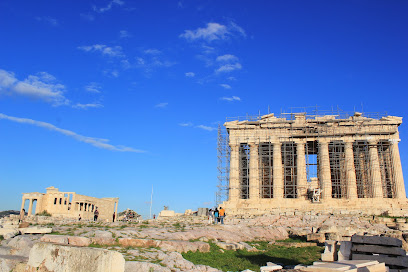
Byzantine Cistern
0.1 km
Explore the Byzantine Cistern in Athens, a captivating historical landmark showcasing ancient architecture and a rich cultural heritage.

Stoa of Eumenes ΙΙ
0.1 km
Explore the Stoa of Eumenes in Athens, a historical landmark that reveals the rich architectural and philosophical legacy of ancient Greece.

Propylaea
0.1 km
Explore the historic Propylaea, the grand entrance to the Acropolis, and immerse yourself in the rich history and breathtaking architecture of ancient Athens.

Essential places to dine
Xenious Zeus
0.2 km
Discover the rich flavors of Greece at Xenious Zeus, where authentic cuisine meets warm hospitality in the heart of Athens.

Klepsydra
0.2 km
Discover authentic Greek flavors at Klepsydra in Athens - where tradition meets modern culinary excellence.

Geros Tou Moria Restaurant
0.2 km
Discover authentic Greek cuisine at Geros Tou Moria Restaurant in Athens - where tradition meets taste in every dish.

Anafiotika Cafe - Restaurant
0.2 km
Experience authentic Greek cuisine and breathtaking views at Anafiotika Cafe - your serene escape in the heart of Athens.

Restaurant Scholarhio
0.3 km
Experience the heart of Greece through exceptional flavors at Restaurant Scholarhio in Athens.

To Kafeneio
0.3 km
Experience authentic Greek cuisine at To Kafeneio - where tradition meets flavor in the heart of Athens.

Daphne's Restaurant
0.3 km
Experience authentic Greek cuisine at Daphne's Restaurant in Athens - where every dish tells a story.

Kosmikon
0.3 km
Savor authentic Greek flavors at Kosmikon – a culinary gem in Athens showcasing Mediterranean delights.

Strofi Athenian Restaurant
0.3 km
Experience authentic Greek cuisine at Strofi Athenian Restaurant with breathtaking views of the Acropolis in Athens.

Trattoria
0.4 km
Experience authentic Greek cuisine at Trattoria in Athens - where tradition meets flavor in every dish.

GH Attikos Restaurant
0.4 km
Savor exquisite Greek cuisine with stunning Acropolis views at GH Attikos Restaurant in Athens.

Taverna Vyzantino
0.4 km
Discover authentic Greek flavors at Taverna Vyzantino in Athens – where tradition meets taste in every dish.

Ionos mediterraneon Greek Cuisine
0.4 km
Discover authentic Mediterranean flavors at Ionos Greek Cuisine in Athens—where every meal tells a story steeped in tradition.

Pantheon
0.4 km
Experience authentic Greek flavors at Pantheon - where tradition meets innovation in every dish.

SENSE Rooftop Restaurant
0.4 km
Experience fine dining with stunning views at SENSE Rooftop Restaurant in Athens—where culinary excellence meets breathtaking scenery.

Markets, malls and hidden boutiques
Emporion Gift Shop Plaka
0.3 km
Shop unique souvenirs and crafts at Emporion Gift Shop Plaka, where Greek culture comes alive in every delightful piece.

Potpourri Concept Store
0.3 km
Explore the Potpourri Concept Store in Athens for unique fashion accessories, perfumes, and creative supplies in a charming atmosphere.

NOSTALGIA GIFT SHOP
0.3 km
Discover unique souvenirs and artistic handicrafts at Nostalgia Gift Shop in Athens, where every item tells a story of Greece's rich heritage.

Roy's Shop - Greek Art & Souvenirs
0.3 km
Explore Roy's Shop in Athens for unique Greek art and souvenirs that embody the spirit of Greece, perfect for travelers seeking authentic keepsakes.

Gallery Demeter
0.3 km
Explore Gallery Demeter in Athens for unique souvenirs that embody Greek culture and artistry, perfect for every traveler seeking authentic keepsakes.

Leather Shop
0.3 km
Explore the Leather Shop in Athens for unique, handcrafted leather goods that embody Greek craftsmanship and culture.

Hydra Gallery - Athens Greece
0.3 km
Immerse yourself in the vibrant contemporary art scene at Hydra Gallery in Athens, Greece - a haven for art lovers and cultural enthusiasts.

Cool Greek shops
0.3 km
Discover unique local crafts and artisanal goods at Cool Greek Shops - a must-visit destination for authentic souvenirs in Athens.
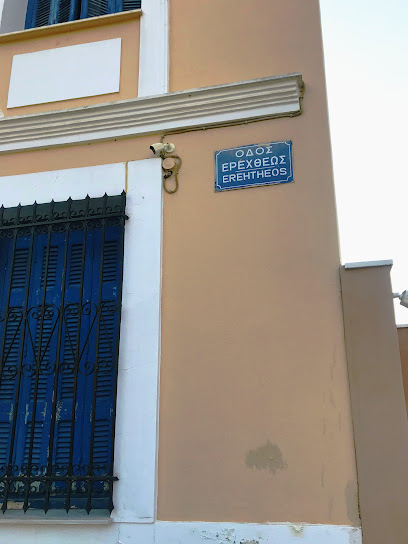
Hercules Shop
0.3 km
Explore Hercules Shop in Athens for unique souvenirs, local crafts, and authentic Greek treasures that embody the rich culture of Greece.

Museum Shop
0.3 km
Explore a treasure trove of unique souvenirs and cultural artifacts at the Museum Shop in Athens, reflecting the rich heritage of Greece.

The Greek Shop
0.3 km
Discover the authentic flavors and beauty of Greece at The Greek Shop in Athens, your ultimate stop for local groceries and cosmetics.

Thiki Greece
0.3 km
Discover authentic Greek souvenirs at Thiki Greece, where local culture and craftsmanship come together in the heart of Athens.

Flâneur Souvenirs & Supplies
0.3 km
Discover authentic Greek treasures at Flâneur Souvenirs & Supplies, where unique gifts and local crafts await in the heart of Athens.

Olive House
0.4 km
Explore Olive House: A charming gift shop in Athens offering unique souvenirs and authentic Greek treasures.

Forget Me Not
0.4 km
Explore the charm of Forget Me Not, Athens' go-to souvenir store for unique gifts and local crafts that embody the spirit of Greece.

Essential bars & hidden hideouts
Plaka street
0.2 km
Discover the charm of Plaka Street, where vibrant bars meet historic Athenian culture, offering an unforgettable experience in the heart of Greece.

Jackass Penguin Gallery and Cocktail Bar
0.3 km
Discover the unique flavors of Greece at Jackass Penguin Gallery and Cocktail Bar, where culinary excellence meets vibrant local art.

Licores
0.3 km
Experience the lively atmosphere and unique cocktails at Licores, one of Athens' top bars for nightlife and relaxation.

Brettos bar
0.3 km
Experience the rich tradition of Greek spirits at Brettos Bar in Plaka, Athens—where history and vibrant nightlife converge.

CHANDELIER
0.4 km
Discover the authentic flavors of Greece at Chandelier, a top grill restaurant in Athens, offering a vibrant atmosphere and mouthwatering dishes.

Athens Sports Bar
0.5 km
Athens Sports Bar: Your go-to destination for sports, karaoke, and a lively atmosphere in the heart of Athens.

Thea Terrace
0.5 km
Discover the charm of Athens at Thea Terrace, where stunning views and delightful drinks create the perfect atmosphere for relaxation.

Ipitou The Bar
0.5 km
Discover the lively Ipitou The Bar in Athens, where craft beers and creative cocktails meet a vibrant atmosphere for unforgettable nights.

City ZEN All Day Bar Restaurant
0.5 km
Experience the essence of Athens at City ZEN All Day Bar Restaurant, where culinary delights and a vibrant atmosphere await every visitor.

Kiki de grèce
0.5 km
Discover the essence of Greek viticulture at Kiki de Grèce, a must-visit wine bar in the heart of Athens.

Blue Bird
0.5 km
Experience the vibrant nightlife at Blue Bird, Athens' premier bar for cocktails, music, and unforgettable moments.

360 Cocktail Bar
0.5 km
Experience breathtaking views and expertly crafted cocktails at 360 Cocktail Bar, a rooftop gem in the heart of Athens.

All Day Bar
0.6 km
Experience the vibrant nightlife of Athens at All Day Bar, where adult entertainment and a lively atmosphere come together for an unforgettable night.

Tiki Bar Athens
0.6 km
Experience the vibrant atmosphere of Tiki Bar Athens, where tropical vibes and refreshing cocktails await in the heart of the city.

Loser Bar
0.6 km
Experience the vibrant nightlife of Athens at Loser Bar, where expertly crafted cocktails meet a lively atmosphere and unforgettable vibes.




